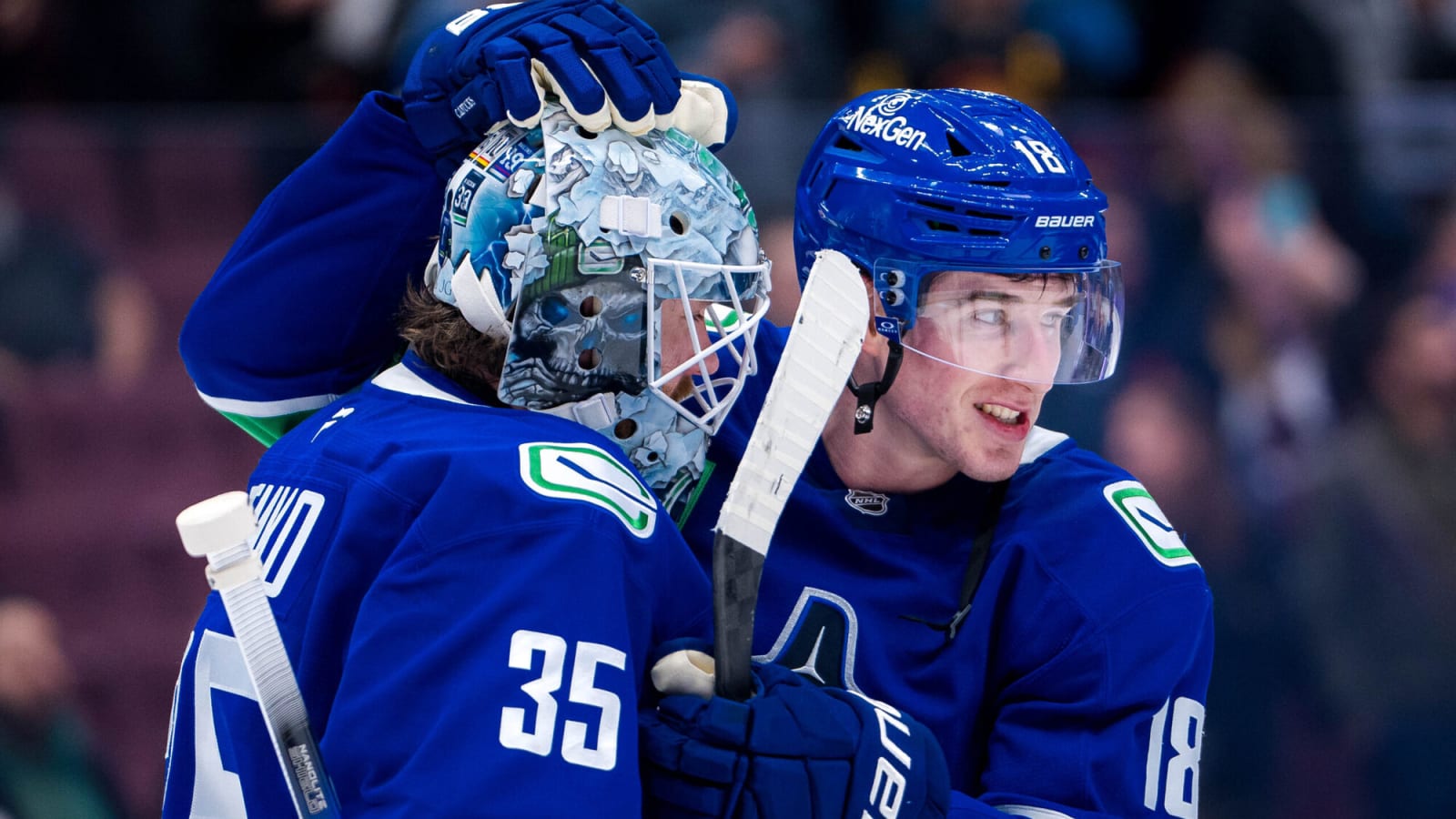
Drew O’Connor didn’t really make a mark in the 31 games he played for the Vancouver Canucks after being acquired in a late January trade from Pittsburgh. The big winger scored four times and added five assists while settling in as one of the team’s top penalty killing options. Evidently, that 23-point pace over a full season was enough for management to reward the 27-year-old Chatham, NJ native with a new two-year contract extension worth $2.5M per season.
As O’Connor begins his first full season in Vancouver, he needs to find more ways to make an impact. Of his four goals as a Canuck, one was into an empty net and another came on a penalty shot in overtime in San Jose. That left him with just a pair of goals and five total points at 5-on-5 where the Canucks were outscored by five (12-17) in nearly 400 minutes with O’Connor on the ice.
A left-handed shot, O’Connor has the versatility to play either wing and it’ll be interesting to see where he ultimately slots in under new head coach Adam Foote. With Jake DeBrusk, Evander Kane, and Nils Höglander likely ahead of him on the left side, O’Connor could look for a role on right wing. But the Canucks have Brock Boeser, Conor Garland and Kiefer Sherwood as natural righties and all have better scoring profiles. It seems clear that O’Connor will fill a bottom six role and will have to carve out an identity to help the hockey club.
A smooth skater with an ability to pressure defenders with an aggressive forecheck, O’Connor would benefit from finding a way to be more physical than he showed in his brief time with the Canucks. He registered 32 hits in the 31 games he played after the trade.
As a penalty killer, O’Connor was the fourth most-used forward over the final two and half months of the season behind Pius Suter, Teddy Blueger and Kiefer Sherwood. With Suter (and Dakota Joshua) no longer in the fold, opportunity appears to be knocking for O’Connor to elevate his contributions while the Canucks are shorthanded.
While it’s hard to imagine a massive surge in scoring at this stage of O’Connor’s career, he is just one season removed from a 16-goal and 33-point campaign with the Penguins. It must be noted however, two of his most frequent linemates that season were guys by the name of Sidney Crosby and Evgeni Malkin. That likely helped prop up those totals. The Canucks would likely be thrilled if he could generate those kinds of numbers next season. Nils Höglander scored 24 goals two years ago and Kiefer Sherwood netted 19 last season with both players serving primarily in depth roles. So there are recent examples for O’Connor to follow in terms of finding ways to contribute from lower in the line-up.
The Canucks insisted from the day of the trade that O’Connor was more than a throw in to make the dollars make sense. This is a player the front office was familiar with and one they believe in. And now it will be up to O’Connor to reward that faith and earn the new contract.
He should arrive at his first Canucks training camp with a boost in confidence having helped the United States win its first World Hockey Championship in nearly a century in May.
Now the goal for Drew O’Connor and the rest of the Canucks is to get this team back to the Stanley Cup Playoffs. And for O’Connor that will likely mean using his speed effectively to pressure opponents and doing his part to help keep the Canucks penalty kill near the top of the league.
Meeting expectations for Drew O’Connor in 2025-26 season:
O’Connor should be able to push for double-digits in goals and find a way to contribute 25 points while holding his own defensively in a depth role. Those seem like attainable targets for a player with his skill set. He needs to add value as a penalty killer and it seems like he is poised to be one of the top four forwards used in that capacity.
Exceeding expectations for O’Connor in 2025-26:
If O’Connor can better his previous career highs offensively (16 goals and 33 points), he will have exceeded expectations. For that to happen, he’ll need to show better hands than he did in his limited opportunities down the stretch. It’s important to note that his four goals as a Canuck came on 35 shots leading to a higher shooting percentage (11.4%) than his career average (8.8%). The season he scored 16 times he registered 160 shots on goal. So part of his objective this season should be to put far more pucks on net than he did after the trade.
Below expectations for O’Connor in 2025-26:
Failing to score in double-digits and finishing with fewer than 25 points would be a massive disappointment for a player this management group clearly believes in. Having a negative goal differential at 5-on-5 as a role player would also be a disappointment. And not holding up his end of the bargain on a penalty kill that showed so much promise last season would also work against O’Connor.
The bottom line in all of this is that the Vancouver Canucks don’t need Drew O’Connor to be a star. But he needs to find ways to be more noticeable than he was on too many nights last season. Whether it’s by using his speed effectively, finding a way to be more aggressive or helping protect late game leads, O’Connor needs to develop more ways to leave his stamp on hockey games. He’s a big guy, but was hard to find on many nights last season. That can’t be the case again in 2025-26.
More must-reads:
- Islanders sign top pick of 2025 draft
- Texas' Arch Manning has concern on OL after season-ending injury
- The 'NBA playoff point-per-game leaders' quiz
Breaking News
Trending News
Customize Your Newsletter
 +
+
Get the latest news and rumors, customized to your favorite sports and teams. Emailed daily. Always free!








